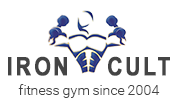Tips for a Lifetime to Stay Injury Free.
John Alvino is a strength and conditioning coach, a fat loss expert, a fitness author, and an ex-convict. I have been following his writings for a while. I feel that he is one of the few trainers who don’t mince words. I do not agree on some of his findings. But he does standout, as his view on physical training is truly valuable.
His weekly newsletter featured a worthy article. I will present the gist of it. I will also present my argument against few of his ideas where I have my reservations.
1) Never Train to Failure: He suggests that each set should end shy of failure. Now, the idea of failing is ambiguous. For example, you say that a maximum of five repetitions is possible on a bench press. You will probably miss executing a sixth repetition. Rather, you get those repetitions relatively easily. For you just felt that there is more gas left in the tank. This maybe the case several times, for your strength depends upon several unknown factors. But, yes, generally this rule should be applied.
2) He vehemently opposes bench pressing, for he states, “I know, I know, a lot of guys will be calling me out for this recommendation. But I stand by it wholeheartedly. The only people I allow to bench press are athletes or powerlifters who are tested on it. Occasionally, I may make an exception for someone young and healthy if they need to gain weight in a hurry.”
I endorse his views. Years of bench pressing takes a huge toll on the shoulders. It can result in very stiff shoulders, leading to dysfunction. Taking this into consideration, we at the gym bench press once a week. I also make it a point to keep the sets minimal. In addition, I ask my clients to perform fewer repetitions on the bench press. Fewer repetitions means less stress on the shoulder joint. We also employ using a lot of variety on the bench press–bars, dumbbells, and kettlebells. This strategy is again used to lessen the stress on the shoulder joint.
I have been lifting weights for 14 years. I don’t indulge much on bench pressing for upper body strength; rather, for upper body strength I perform other power movements.
3) From a dead lifting point of view, he states, “Rarely deadlift heavy from the floor. Deadlifting heavy from the floor leads to overtraining and back injuries more than any other exercise. If your goals involve deadlifting, lighten up and pull from the floor for speed, do the majority of your heavy work from blocks, or use high handle trap bar deadlifts for variety.”
I may not agree with his view on the deadlift. I might, however, agree when he says not go very heavy on the deadlift, for the reasons he has stated–rather, to pull for speed. But, I do feel that, generally, the weight should be pulled from the floor, for, it simulates whatever function we perform anywhere else. For example, you want to pick up a heavy bag from the floor. You will need to be strong in the entire range of motion to pick the thing up from the floor. You cannot always expect the thing to be on a block or on a high platform.
4) On the use of fat grips, he states, “Use fat grips on everything. Grabbing onto a thin (traditional) bar puts unnecessary stress on the tendons at the elbow and shoulder joints. Grabbing onto a fat implement develops grip strength, relieves tendon stress, and builds much more realistic and natural strength.”
I definitely agree with him on this, but I do find myself guilty. I can ask my clients to use the fat grips more often than we do. Agree with him about this. I should ask my clients to use more often.
5) Regarding training with partners, he states that we should not compete with our training partners every workout. Each day is not a competition. You should train to get stronger. You should not have to display maximal strength each and every workout. I do agree with him on this.
6) On mobility drills, he says, “Work on mobility. It seems like no one wants to do mobility work until they feel like crap and are forced to do it. Trust me, work on mobility before you ever have a problem. It’s just as important as your strength training.”
I cannot agree with him more on this.
7) On the topic of soft tissue therapy, he states, “Do soft tissue work. Foam rolling, lacrosse ball myofacial work, massage, etc. keeps the length and quality of your tissue in an optimal state. Skimping on this will increase your likelihood of tightness and thus unnecessary injuries.”
I have realized this late. The saying goes, “Better late than never.” I have found some solace from the quote.
8) Last but not the least, about warm-ups, he adds, “This involves some heart rate elevation, tissue work and rehearsal of what is to be performed during the workout.” I don’t think we can disagree with him on this.
I believe I have summed up John Alvino’s guidelines appropriately. I also have to state that I doubly agree with him on his statement about mobility and warm up. Unfortunately, most of us don’t agree about the importance of warm-up and mobility till we get injured. Apply the above guidelines. You will be strong, healthy, fit, and, above all, injury free.
One thought on “Tips for a Lifetime to Stay Injury Free.”
Comments are closed.

Great advice. Could you share recommendations for what you replace bench press with? What other “power movements” do you program?